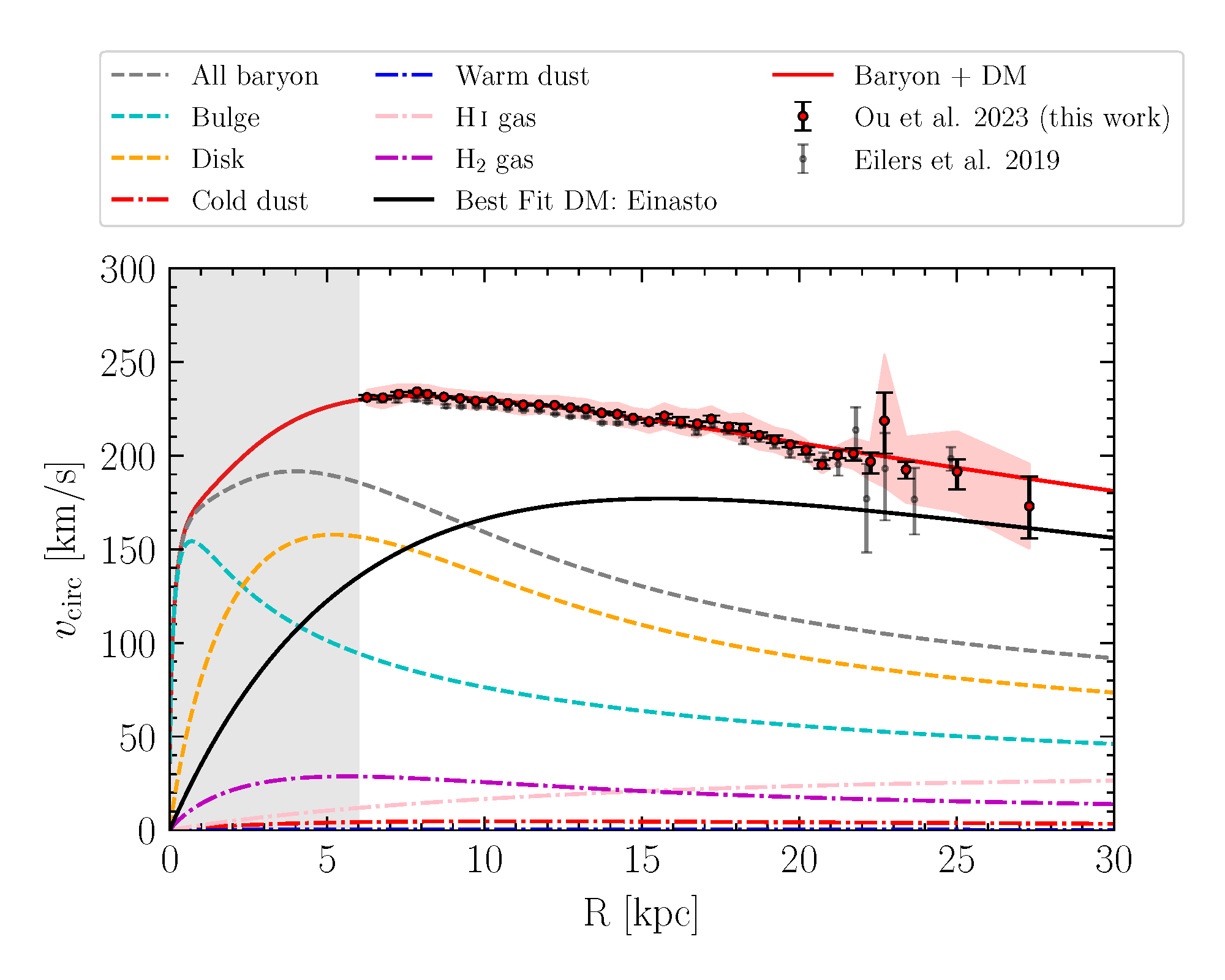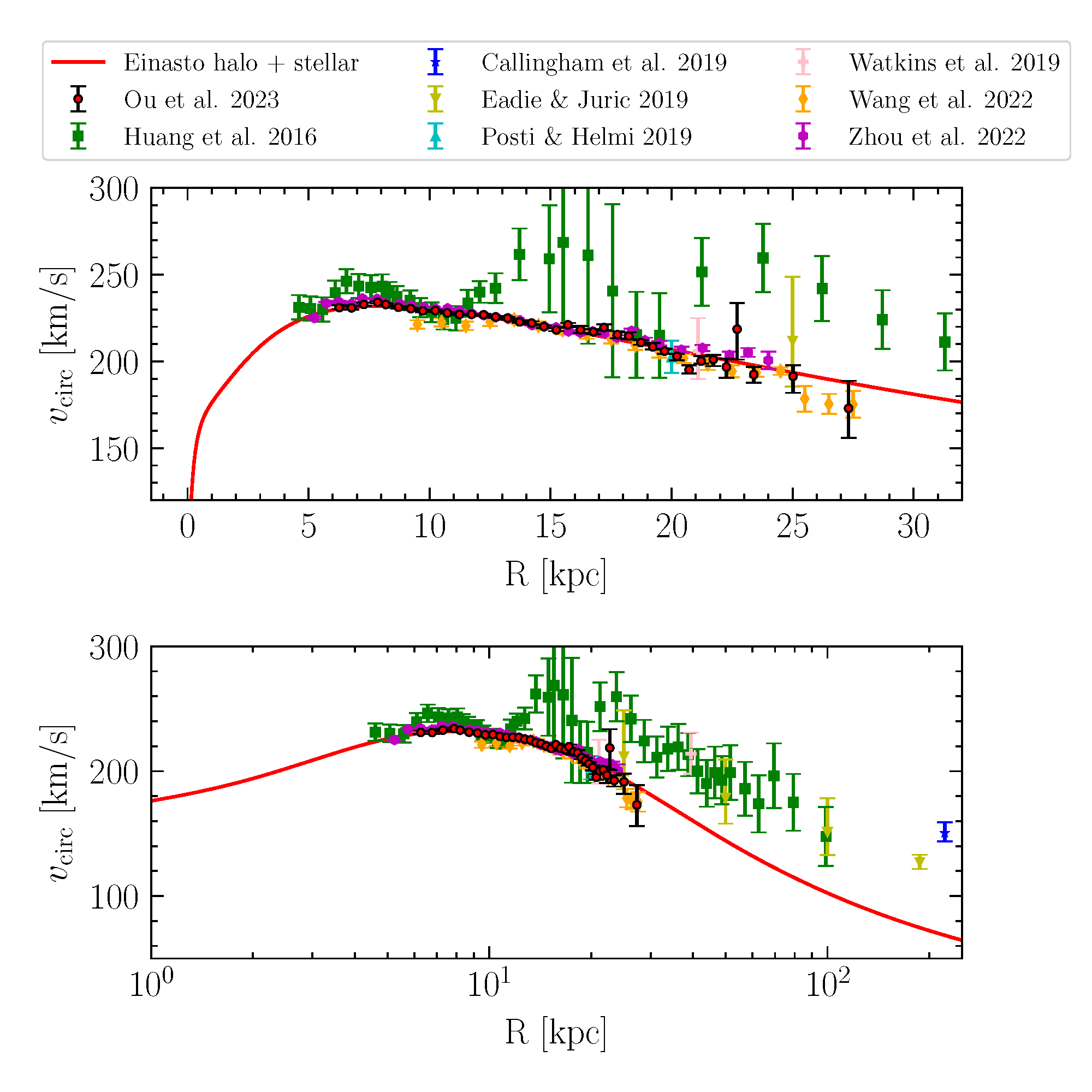The Milky Way Circular Velocity Curve with Gaia DR3
An unexpected decline in the Milky Way's circular velocity curve at the outer edge of the disk
The rotation/circular velocity curve of a disc galaxy represents how fast an object would move at a given radial distance from the centre of the galaxy, assuming it is in a perfectly circular orbit. It has long been used within our Galaxy to constrain the Milky Way mass and mass distribution. The circular velocity curve is typically measured using the kinematics of stars, gas, and other tracers in the disk. In this project, we use the third data release from the Gaia mission to measure the circular velocity curve of the Milky Way using stars as tracers. We find that the circular velocity curve declines at the outer edge of the disk, which is unexpected and has important implications for the dark matter distribution of the Milky Way.

The curve and the best-fit model indicates that the Milky Way may have a potentially cored dark matter halo, and an overall less massive total dark matter halo mass. We stress that the cored profile and virial mass estimate are extrapolations from our measurements. Future observations may help alleviate the need for an assumed functional form and directly bridge the gap between the circular velocity curve and satellite/stream results by providing stellar kinematics at overlapping R. Testing the different methodologies on simulations will also help identify potential systematic uncertainties between them.
